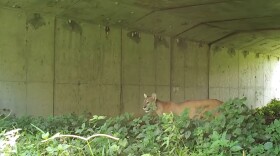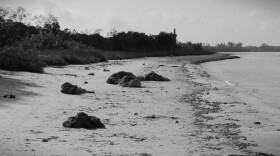-
Florida Gulf Coast University students and staff worked alongside Island Coast High School students to plant a new mangrove forest on Bowditch Point Tuesday. The nearly 300 propagules, detached parts of mangroves that are used as seeds, will be used as a barrier for storm surge, habitat for native species, and more.
-
-
The Sanibel-Captiva Conservation Foundation will present noted ocean explorer, educator, and filmmaker Jean-Michel Cousteau as speaker for the 8th annual Paul McCarthy Memorial Lecture on Feb. 6 at the Sanibel Community House. Cousteau's lecture will be a multimedia presentation drawing from more than 70 years of exploration.
-
Alico Inc. announced its exit from citrus production in January. In March, Alico unveiled Corkscrew Grove Village with an eventual 9,000 residences
-
Nobody knew what to expect this year from M15 and F23, the breeding pair of eagles in North Fort Myers. The 2024-2025 breeding season nearly ended in total disaster. The two eaglets that the raptors produced contracted avian flu and died shortly into their young lives. The two adult eagles also fell ill, but survived. All this was watched with dread and anticipation last year via the Southwest Florida Eagle Cam website. This popular daily drama has been livestreaming an intimate view of the North Fort Myers eagle’s nest since 2012.
-
An eagle nest in north Lee County that millions have watched over the years is again drawing attention. The breeding pair of American bald eagles in the North Fort Myers nest successfully continued their family this week. One egg was confirmed Wednesday and a second Saturday night at the Bayshore Road nest of F23 and M15.
-
The remote-controlled “Robobunny” is designed to lure the stealthy Burmese python out of hiding so trappers can pounce. Burmese pythons have been slithering, eating, and reproducing throughout the Everglades since at least 1979.
-
A Naples homeowner found a bald eagle tangled in vines, called the experts from the von Arx Wildlife Hospital, where the bird was treated and released back into the wild
-
National Public Lands Day is Sept. 27
-
The resiliency being discussed all week is measured by the preparedness of Florida’s communities to face the environmental calamities that come with climate change
Play Live Radio
Next Up:
0:00
0:00
Available On Air Stations










